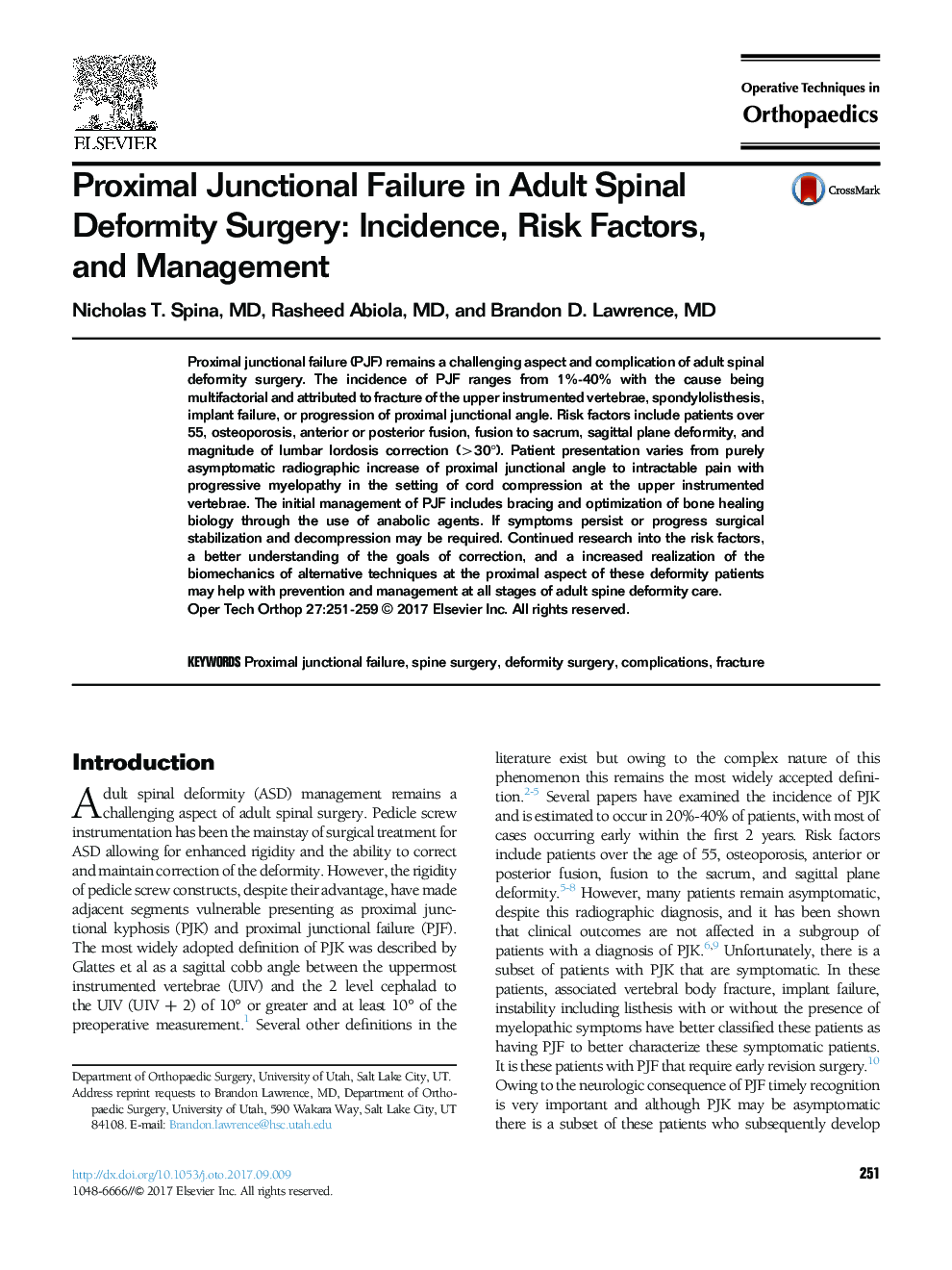| Article ID | Journal | Published Year | Pages | File Type |
|---|---|---|---|---|
| 8801814 | Operative Techniques in Orthopaedics | 2017 | 9 Pages |
Abstract
Proximal junctional failure (PJF) remains a challenging aspect and complication of adult spinal deformity surgery. The incidence of PJF ranges from 1%-40% with the cause being multifactorial and attributed to fracture of the upper instrumented vertebrae, spondylolisthesis, implant failure, or progression of proximal junctional angle. Risk factors include patients over 55, osteoporosis, anterior or posterior fusion, fusion to sacrum, sagittal plane deformity, and magnitude of lumbar lordosis correction (>30°). Patient presentation varies from purely asymptomatic radiographic increase of proximal junctional angle to intractable pain with progressive myelopathy in the setting of cord compression at the upper instrumented vertebrae. The initial management of PJF includes bracing and optimization of bone healing biology through the use of anabolic agents. If symptoms persist or progress surgical stabilization and decompression may be required. Continued research into the risk factors, a better understanding of the goals of correction, and a increased realization of the biomechanics of alternative techniques at the proximal aspect of these deformity patients may help with prevention and management at all stages of adult spine deformity care.
Related Topics
Health Sciences
Medicine and Dentistry
Orthopedics, Sports Medicine and Rehabilitation
Authors
Nicholas T. MD, Rasheed MD, Brandon D. MD,
